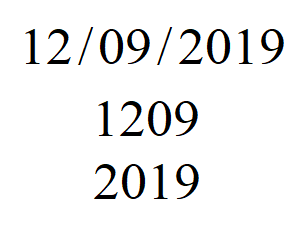I know it’s a bit late for a Year in Review post, but in trying to keep the series alive, better late than never I guess.
One reason it’s been hard to find time to reflect is that I started at a new school this past year, by far my most significant professional event in 2019. After 12 years at Brooklyn Technical High School, I started at Stuyvesant last fall.
It’s been a lot of work starting at a new school after 12 years at my last. But a lot of that work comes from being forced to re-imagine everything I do as a teacher, and that has been exciting and invigorating.#edchat
— Patrick Honner (@MrHonner) September 28, 2019
I had a great time at Brooklyn Tech. Over 12 years I taught everything from algebra to multivariable calculus, designed and developed new courses in advanced mathematics and computing, and rebuilt Tech’s Mathematics Major. And in my role as instructional coach I mentored teachers, led teacher teams, redesigned curricula, and developed and structured professional learning for a department of over 40 teachers.
But the right opportunity came along at the right time, and I made the move. I’ve been very lucky to work with great students and teachers throughout my career, and that continues for me at Stuyvesant. And if these first few months are any indication, I have a lot to look forward to at my new school.
Writing was again a big part of my professional year. In August my test-prep book was published, the culmination of a long and satisfying experience working with Barron’s / Kaplan. I continued writing my column for Quanta Magazine, where I explored a faster way to multiply, the geometry of Netflix, and the limits of mathematics and our imagination, among other modern mathematical breakthroughs. And I also reviewed several manuscripts and book proposals this past year, which is always interesting and educational.
I was busy speaking and presenting on a wide variety of topics in mathematics, computing, and teaching in 2019. I presented at national events such as MSRI’s Critical Issues in Mathematics Education, the NCTM Annual Meeting, and the NSTA STEM Forum. I was happy to again visit NCSSM as an invited speaker at the TCM Conference, and I spoke in New York City several times, including talks on plane tilings and computational thinking for teachers at Math for America. I also participated in several webinars this past year, including moderating STEM Up Your Classroom for the NSTA and presenting a computational approach to functions for the Global Math Department.
As usual the new year is filling up, and going by, quickly. I’ve got several interesting projects in the works for 2020, but a strong finish to my first year at my new school is my primary goal. After that, making adjustments for year two will be next on the list.
Related Posts



